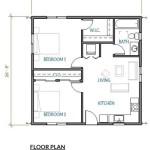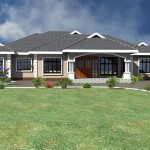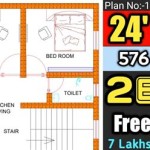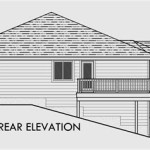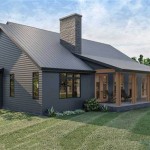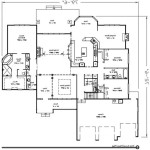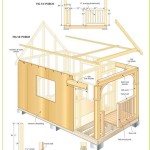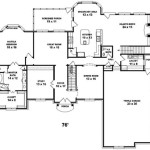A-Frame Plans with Loft: Maximizing Space and Style
The A-frame design, characterized by its sharply angled roof that extends to the foundation, has experienced enduring popularity across various architectural styles. When combined with a loft, the A-frame's potential for maximizing usable space is significantly amplified. The inherent simplicity of the structure, coupled with the added functionality of a loft, makes A-frame plans with lofts attractive for those seeking efficient and aesthetically pleasing living spaces.
A-frame structures historically served as practical solutions for quick and economical shelter. Their simple construction and use of readily available materials contributed to their widespread adoption. The addition of a loft to an A-frame design builds upon this foundation by creating an elevated area that can serve as a bedroom, living room, office, or storage space, contingent on the specific needs and design preferences of the occupants.
The integration of a loft within an A-frame structure introduces certain design considerations. The steep roof pitch, while visually striking, limits the headroom in the upper levels of the structure. Careful planning is necessary to ensure that the loft area is usable and comfortable. This includes optimizing the placement of stairs or ladders for access, calculating usable floor space considering the sloping roof, and addressing issues of ventilation and natural light.
Key Considerations for Designing A-Frame Plans with Lofts
Developing successful A-frame plans with lofts requires addressing several fundamental design aspects. These key factors ensure a functional, comfortable, and structurally sound dwelling.
Structural Integrity and Building Codes: The primary concern for any construction project is structural integrity. The A-frame design, with its load-bearing roof, necessitates precise engineering to withstand environmental loads such as wind, snow, and seismic activity. Local building codes dictate specific requirements for roof pitch, structural materials, and foundation design. A qualified structural engineer should review and approve all A-frame plans, ensuring compliance with applicable regulations and verifying the structural stability of the design. The engineer's assessment should incorporate factors such as the specific geographic location, anticipated weather patterns, and the intended use of the structure. Plans must account for load distribution from the roof to the foundation, ensuring the structural system can adequately support the weight of the building and its occupants. Furthermore, the impact of the loft on the overall structural performance should be evaluated, as the added weight and potential alterations to the roof structure can affect the stability of the entire building. Improper consideration of these factors can lead to structural failure, rendering the building unsafe and potentially violating local building codes.
Optimizing Space Utilization and Functionality: A-frame structures inherently possess limitations regarding usable space due to the sloping roof. The integration of a loft exacerbates this challenge, requiring careful consideration of spatial planning and functional design. The loft area should be designed to maximize usable floor space, considering the limited headroom imposed by the roof pitch. Designers must creatively employ techniques such as dormers, strategically placed windows, and built-in furniture to enhance both functionality and comfort. The placement of stairs or ladders providing access to the loft should be carefully considered to minimize obstruction of the ground floor space. Furthermore, the intended use of the loft should inform the design. If the loft is intended as a bedroom, adequate space for sleeping, storage, and dressing should be provided. If the loft is intended as a living area, considerations should be given to furniture placement, lighting, and ventilation. Thoughtful space planning ensures the loft is not only aesthetically pleasing but also serves a practical and functional purpose.
Addressing Ventilation, Lighting, and Insulation: Effective ventilation, adequate natural light, and proper insulation are vital for creating a comfortable and energy-efficient living environment within an A-frame structure with a loft. The steep roof pitch can create challenges in providing adequate ventilation, particularly in the upper levels of the structure. The inclusion of strategically placed windows, skylights, and ventilation systems can facilitate airflow and prevent the buildup of stagnant air. Natural light is also essential for creating a bright and inviting interior. Skylights, dormer windows, and large windows in the gable ends of the A-frame can maximize natural light penetration. Insulation is crucial for maintaining a comfortable temperature year-round and reducing energy consumption. Proper insulation in the roof, walls, and floor can minimize heat loss in the winter and heat gain in the summer. Selecting appropriate insulation materials and ensuring proper installation are essential for creating an energy-efficient and comfortable living space within the A-frame structure with a loft.
Common A-Frame Loft Design Styles
A-frame structures with lofts are not constrained to a single design aesthetic. The versatility of the A-frame lends itself to a variety of architectural styles.
Rustic/Cabin Style: This style emphasizes natural materials, exposed beams, and a warm, inviting atmosphere. Wood is a prominent feature, often used for siding, interior walls, and flooring. Stone accents may also be incorporated, adding to the rustic charm. Lofts in this style typically feature exposed timber framing and simple, functional furnishings.
Modern/Minimalist Style: This design approach prioritizes clean lines, uncluttered spaces, and a focus on functionality. Large windows and open floor plans are common elements. Minimalist A-frames often employ industrial materials such as metal and concrete, creating a sleek and contemporary aesthetic. Lofts in this style may feature minimalist railings, built-in storage solutions, and a neutral color palette.
Scandinavian Style: This style combines simplicity, functionality, and a connection to nature. Light colors, natural materials, and ample natural light are hallmarks of Scandinavian design. A-frame structures in this style often feature white-painted walls, wood flooring, and minimalist furnishings. Lofts in Scandinavian-inspired A-frames typically incorporate skylights, light-colored wood accents, and cozy textiles.
Practical Applications of A-Frame Plans with Lofts
The versatility of A-frame plans with lofts allows for a wide range of practical applications, making them suitable for various needs and lifestyles.
Vacation Homes/Cabins: The A-frame design is well-suited for vacation homes and cabins, offering a cozy and efficient retreat in natural settings. The loft provides additional sleeping or living space, accommodating families or groups of friends. The simple construction and relatively low cost make A-frames an attractive option for those seeking a second home.
Tiny Houses: A-frame plans are frequently utilized in the construction of tiny houses, maximizing space within a small footprint. The loft provides a dedicated sleeping area, freeing up valuable floor space in the main living area. The compact design and efficient use of materials make A-frames an ideal choice for minimalist living.
ADUs (Accessory Dwelling Units): A-frame structures can serve as ADUs, providing independent living spaces on existing properties. The loft creates a separate bedroom or living area, offering privacy and functionality for tenants or family members. A-frame ADUs can be used as rental units, guest houses, or in-law suites.
Studios/Workspaces: The unique character of an A-frame, combined with the functional space of a loft, can be ideal for studios or workshops for artists, writers, or craftspeople. The loft could serve as an office or storage area while the main floor is used for creative work. The plentiful natural light often found in A-frames also makes them well-suited to creative endeavors.
The selection of an A-frame plan with a loft necessitates careful consideration of several factors: budget, material availability, site conditions, and local building codes. Consultation with qualified architects, engineers, and builders is essential for ensuring a successful construction project. Detailed plans, accurate cost estimates, and adherence to building regulations are crucial for creating a safe, functional, and aesthetically pleasing A-frame structure with a loft that meets the specific needs and preferences of the occupants.

A Frame Cabin Plans With Loft

2 Bed Contemporary A Frame House Plan With Loft 35598gh Architectural Designs Plans

A Frame Cottage Plans For Guest House Temp Cabin Plan

Classic Design For A Low Budget Frame Project Small House Plans Floor

Modern A Frame Cabin Architectural Plans Custom 24 X

Contemporary A Frame With Sleeping Loft Overlooking Great Room 31595gf Architectural Designs House Plans

A Frame House Plans Free Cabin Floor

A Frame House Plans Everything You Need To Know Field Mag

A Frame Floor Plan 1 Bedrm Bath 908 Sq Ft 146 1841

24 X A Frame Cabin Plan Project Small House

